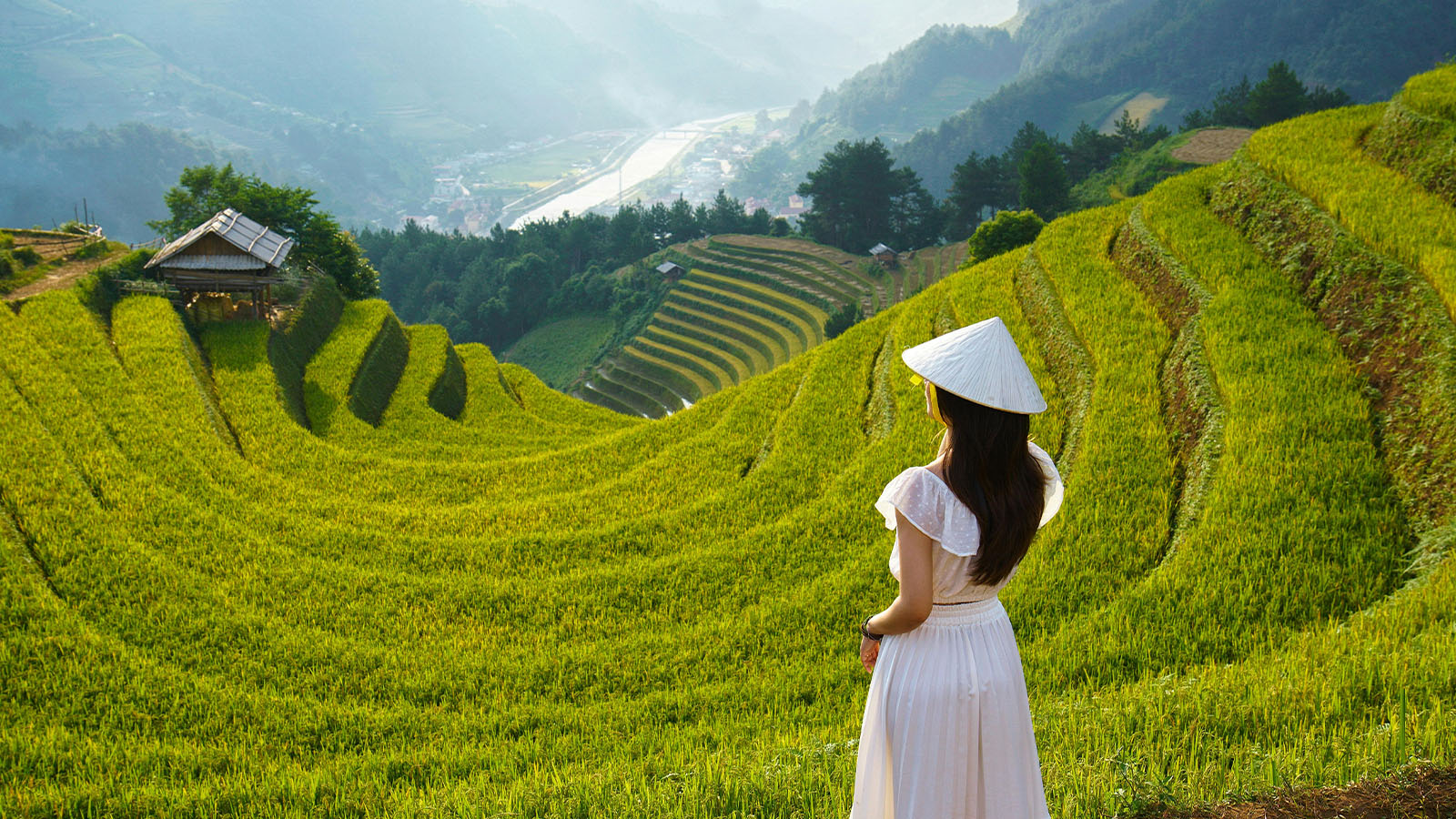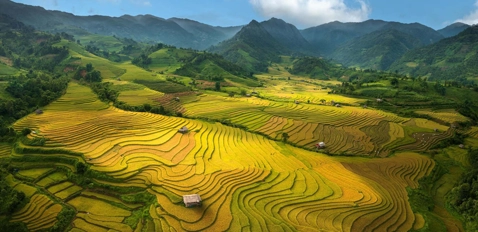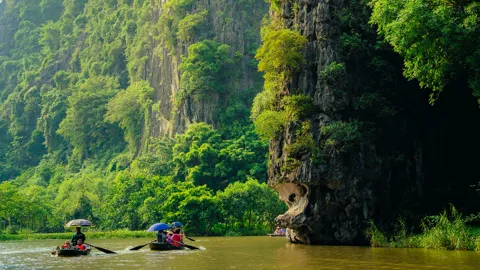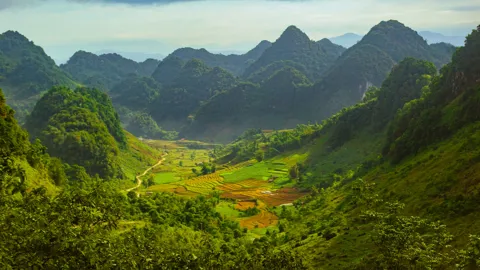Ultimate Travel Guide to Lai Chau
Tucked away in Vietnam's remote northwest, Lai Chau is a land of dramatic mountain peaks, lush valleys, and vibrant ethnic cultures. Often overshadowed by nearby destinations like Sapa or Ha Giang, Lai Chau quietly offers some of the country’s most pristine landscapes and genuine cultural encounters. With fewer tourists and untouched trails, the province is perfect for travelers looking to escape the mainstream tourism and connect deeply with nature and tradition.
Whether you're climbing misty passes, wandering through colorful hill-tribe markets, or sharing meals with local families in stilt houses, Lai Chau promises experiences that are raw, real, and unforgettable. This guide will take you through everything you need to know—from how to get there and where to stay to the must-visit spots and must-try dishes that define the soul of Lai Chau.
Where Is Lai Chau?
Located in the remote northwest of Vietnam, Lai Chau province borders China to the north, Lao Cai to the east, Dien Bien to the west, and Son La to the south. The provincial capital, also named Lai Chau, sits at an altitude of about 1,000 meters, surrounded by soaring mountains, lush valleys, and winding rivers. Its highland terrain is dominated by the Hoang Lien Son mountain range, making Lai Chau a paradise for nature lovers and adventure seekers.
Far from the hustle and bustle of big cities (more than 380km from Hanoi), Lai Chau remains one of Vietnam’s least-traveled regions, which means its landscapes and ethnic cultures remain impressively intact. This off-the-beaten-path destination offers immersive experiences with local communities and some of the most jaw-dropping natural scenery in Southeast Asia.
Top Attractions in Lai Chau
Lai Chau is full of breathtaking landscapes. Whoever you are a hiking enthusiast, a photographer, or an adventurer seeking thrills—this region offers numerous opportunities
Hoang Lien Son National Park
Hoang Lien Son National Park is one of the most famous sites in Lai Chau. It is crisscrossed by hiking trails that offer spectacular views of the valleys and surrounding mountains, including Fansipan Peak, the highest peak in Vietnam. This expansive area also offers biodiversity and rugged terrain for trekking, bird-watching and other activities.
Sin Ho Plateau
Sin Ho, often nicknamed "Little Sapa," is a region located north of Lai Chau. It is famous for its ethnic groups, waterfalls, and magnificent rice terraces that cover the surrounding hills. These landscapes, visible on the Lai Chau map, are among the most beautiful in the country. They offer exceptional views, particularly during the yellow rice paddy season. Sin Ho is also a place where you can discover the culture of several ethnic groups, including the H'mong, Lu, Lao, and Thai.
Nam Lum Stream
A favorite among local trekkers, this serene stream flows through ancient forests and quiet valleys, offering great picnic and swimming spots during hot weather.
O Quy Ho Pass
O Quy Ho Pass is one of the most famous mountain passes in Vietnam, located on National Highway 4D that connects Lao Cai to Lai Chau. It is famous for its spectacular views of the Hoang Lien Son Mountains. This pass is the highest point on this route, offering breathtaking views of deep valleys and tropical forests. It's an ideal place for nature lovers and adventure seekers.
Phong Tho District
Rich in ethnic culture, this area is known for its traditional festivals and embroidery. It’s a great place to witness the authentic lifestyles of the Dao, Hmong, and Thai people.
Tan Uyen's Tea Hills
The magnificent tea hills of Tan Uyen are famous for their terraced tea plantations that stretch as far as the eye can see. This picturesque spot, winding through the mountains, offers a lush and peaceful landscape. The region is one of Vietnam's largest tea producers, and you can experience the traditional tea-making process while enjoying the fresh air and magnificent views.
Bach Moc Luong Tu Mountain
Bach Moc Luong Tu Mountain is one of the highest peaks in Vietnam, reaching an altitude of 3,046 meters. It is part of the Hoang Lien Son mountain range, and climbing it is a challenge for experienced hikers. From the summit, you can admire breathtaking views of the surrounding valleys, lush forests, and distant mountains, offering an unforgettable experience for nature lovers.
Pu Si Lung Mountain
Pu Si Lung Mountain is another imposing mountain in the region, located on the border between Vietnam and China. At 2,880 meters, it is renowned for its wild beauty and biodiversity. It is a popular spot for hikers and adventurers, with trekking trails that allow visitors to explore pristine landscapes and discover the traditions of local ethnic communities.
Pu Ta Leng Mountain
Pu Ta Leng Mountain, at 3,049 meters, is one of the highest peaks in the Lai Chau map. It offers breathtaking views of the surrounding mountains and dense forests. Climbing this mountain is a considerable challenge, but it is rewarded with spectacular panoramas. It is also an ideal place to observe local wildlife, especially birds and other exotic species.
Muong Te Nature Reserve
Muong Te Nature Reserve is a vast protected area located in the mountainous region of Lai Chau. It is home to exceptional biodiversity, with numerous rare plant and animal species. It is a haven for nature lovers and hiking enthusiasts. The dense forests and crystal-clear rivers that flow through the reserve make it an ideal place for wilderness expeditions.
Pusamcap Caves
The Pusamcap Caves, located in Tam Duong District, are a series of spectacular karst formations. They are known for their impressive stalactites and stalagmites, as well as the underground rivers that flow through them. The caves are accessible via a hiking trail and offer a unique experience for those wishing to explore the subterranean wonders of Vietnam.
Si Thau Chai Village
Si Thau Chai Village is a small ethnic community located in the Sin Ho Valley. The inhabitants of this village, mainly H'mong, live according to ancient traditions. The village is an excellent place to experience the local culture, with traditional wooden houses, colorful local markets, and ancestral customs still very much present in daily life.
Tam Duong Weekly Market
Tam Duong Market is one of the most famous markets on the map of Lai Chau. Held weekly, it is a place where residents from neighboring villages come to sell their local produce, such as fresh vegetables, fabrics, traditional jewelry, and spices. It is a lively place where visitors can immerse themselves in the local atmosphere and discover traditional crafts.
Tac Tinh Waterfall
The 130m high waterfall is hidden in the vast, majestic space of the Northwest mountains and forests, where the faithful love story of a Dao ethnic couple has been passed down through time.
Lai Chau Hydroelectric Lake
The vast rivers, the wandering clouds, the villages hidden on the mountainside, the boats cutting through the water and creating white foam... bring an attractive beauty for tourists to explore and experience tourism in the Lai Chau Hydroelectric Lake area.
How to get there?
Lai Chau is accessible by road from Hanoi, although the journey is quite long, approximately 8 hours. The choice is diverse. If you want speed and comfort, buses and private cars are the obvious choice, since they can use the Noi Bai-Lao Cai Expressway. If you want flexibility, however, the motorbike is for you, in exchange for a longer journey.
Once there, you can use local means of transportation, such as motorbikes or taxis, to explore the ethnic villages and natural sites.
Lai Chau's Culture
Lai Chau is not only a destination for nature lovers but also a place rich in traditions and ethnic cultures. On the Lai Chau map, you can locate villages where ethnic groups such as the Thai, H'mong, and Tay live. These communities maintain ancestral traditions, particularly in the areas of handicrafts, cuisine, and traditional festivals.
Handicrafts are one of Lai Chau's strong points. Local people make textiles, baskets, and objects from bamboo and wood, which you can purchase at local markets. The Lai Chau map will help you locate traditional markets where you can discover these products.
Traditional festivals, such as Gau Tao and Lady Han's Festival, are important events in Lai Chau. These celebrations are an opportunity to experience local culture through dances, songs, and traditional dishes.
Lai Chau's Cuisine
Purple sticky rice
If you want a dish that is both delicious and easy to find, then purple sticky rice is the only one! Purple sticky rice is one of the Lai Chau specialties that tourists should try first. The sticky rice is made from the best rice grains, and the purple color comes from the dye made from the Khau cam tree. When cooked, the sticky rice has a bright purple color, a chewy but not sticky texture, an extremely fragrant smell, and a flavor that you won't ever forget.
Buffalo Jerky
If you have the opportunity to visit Lai Chau, you cannot miss the dried buffalo meat with the smoky smell of the ethnic people in the Northwest mountains. This Lai Chau specialty dish is usually made from the muscle meat of buffaloes that roam freely in the mountains and hills. The buffalo meat is dried just right, not hard; when eaten, it still retains the sweetness of fresh meat. Each piece of meat is marinated with special spices, with the smell of Doi seeds, dried chili, and Indian prickly ash seeds. To enjoy the dried buffalo meat, you can tear it into small pieces and add a few slices of lemon to stimulate the taste buds more.
Ban flower bamboo shoot salad
Ban flowers are one of the typical symbols of the Northwest mountains and forests, usually in two colors: purple and white. Ban flowers are also used as an ingredient to make Ban flower bamboo shoot salad, a rustic delicacy of the Thai people in Lai Chau. Ban flower bamboo shoot salad has all the flavors: bitter, sour, spicy, salty, sweet, and nutty.
"Armpit" pigs
If you have the opportunity to visit Lai Chau, do not forget to enjoy the "armpit" pig dish—a famous specialty that always captivates tourists. This type of pig is raised naturally, only eats forest leaves and exercises a lot, making the meat extremely firm and flavorful.
Because it is light in weight, only 10-15kg, people can easily carry it by hand or under the armpit, hence the name "armpit" pigs. They can be cooked into many delicious dishes through boiling, steaming, grilling or smoking. Each dish has a unique and attractive flavor; you will definitely want to try it at least once when coming here.
Lam nhọ
Lam nho—which, according to the Thai language, "lam" means grilled, and "nhọ" means soft, and as such, "lam nhọ" means "grilled until soft"—is a unique specialty dish of Lai Chau, with the main ingredient being fresh buffalo or beef. The meat is grilled over hot coals until cooked, then sliced into thin strips and mixed with typical spices such as Indian prickly ash seeds, chili, garlic, ginger, wild eggplant, and young squash. All are put into bamboo tubes and grilled until perfectly blended, creating a delicious, attractive dish, full of the flavor of the Northwest mountains and forests.
When enjoying, you will feel the wonderful combination of spices, bringing a special Lai Chau specialty that is unforgettable.
Lai Chau remains one of Vietnam’s most authentic and breathtaking destinations. Here, you'll find majestic mountains, ancient cultures, and a serenity that few places can still offer. Unlike more commercialized regions, Lai Chau is all about slow travel—taking the time to trek through clouds, sip corn wine with villagers, and wake to the sound of roosters in a stilt house.
The province might be remote, but that’s part of its charm. It rewards those who make the journey with sights and stories they won’t find anywhere else in Vietnam. And best of all, the warmth of the local people ensures that Lai Chau doesn’t just stay in your travel photos—it stays in your heart.
>>> Pa Khom Bay, Lai Chau Travel Guide
>>> Sin Suoi Ho: An Attractive Community Based Tourism Village in Lai Chau
Send us your comments about : Ultimate Travel Guide to Lai Chau
Required fields *
You might also be interested
Travel ideas
Need some inspiration? Discover some of the best tours in Vietnam, which are highly appreciated by our clients. An excellent starting point to help you choose the right trip to Vietnam, Laos, Cambodia, Burma or Thailand, whether you are traveling alone, as a couple, as a family or with friends.
And because this trip is yours, feel free to customize it as you wish!
Vietnam Cambodia Itinerary 14 Days
Hanoi – Hoa Binh – Mai Chau – Ninh Binh – Halong bay – Hue - Danang – Hoian – Saigon – Ben Tre - Can Tho – Saigon - Siem Reap Angkor - Tonlé Sap - Siem Reap – Ta Prohm - Departure
Vietnam 14 Day Itinerary
Vietnam 14-day itinerary covers the country’s top highlights and quintessential experiences for an unforgettable journey.
Honeymoon Tour Pakcages In Vietnam 12 Days
Saigon Arrival - City Tour – Mekong Delta – Danang – Hoian - by flight - Da Nang – Hanoi - by flight – Halong - overnight on junk – Departure
Authentic Hoang Su Phi Trekking Tours
Hoang Su Phi trekking tours take you to stunning terraces, meet few tourists, connect with locals and enjoy authentic culture.
Best Nha Trang Beach Tour 4 Days
Saigon/Hanoi – Nha Trang relaxation – Saigon/Hanoi – Departure
Mekong Delta Bike Tour Itinerary 7 Days
Cycle through the Mekong Delta in 7 days, discovering floating markets, orchards, craft villages, and tranquil green islands.
Are you interested in this tour?






























Comment